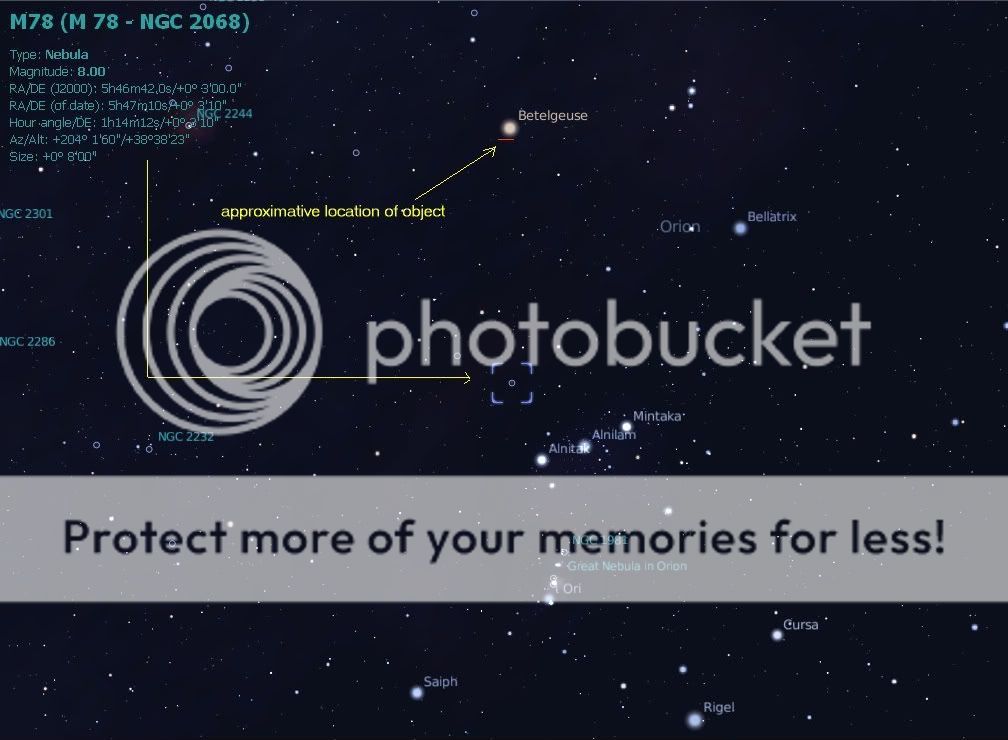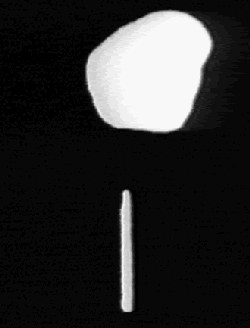It looks like you're using an Ad Blocker.
Please white-list or disable AboveTopSecret.com in your ad-blocking tool.
Thank you.
Some features of ATS will be disabled while you continue to use an ad-blocker.
share:
reply to post by interestedalways
The chicken wire, or honey comb effect is part of the internal optical NV system.
The chicken wire, or honey comb effect is part of the internal optical NV system.
There is a conversation going on about this very thing right now... i shall go and post the link to this thread here, great footage.
Originally posted by interestedalways
what is the explanation of all the honeycomb shapes in the background?
Is this just a part of the camera or filming experience?
my guess would be its shot through a window screen...could be wrong, but i get the same effect when trying to capture stuff outsside.
reply to post by zorgon
Thanks this is sofar the best explanation although I wonder I still if it's indeed the same location as what I filmed.
Here's according to Stelarium the position of NGC 2068 (M78) where roughly 12 south the outburst was observed.
I would think the object is a lot closer to Betelgeuse.

The object reminds me a lot of the so called cylinders around Saturn or the Mars Phobos picture.

Not to say they are in any way related but it just reminds me of these
Thanks this is sofar the best explanation although I wonder I still if it's indeed the same location as what I filmed.
Here's according to Stelarium the position of NGC 2068 (M78) where roughly 12 south the outburst was observed.
I would think the object is a lot closer to Betelgeuse.

The object reminds me a lot of the so called cylinders around Saturn or the Mars Phobos picture.

Not to say they are in any way related but it just reminds me of these
reply to post by Chadwickus
The observation position was in Europe (Luxembourg) so your position, Australia shows it upside down. Rigel was at the time of the observation slightly above horizon line and Rigel never showed like a tube, always a round star.
The observation position was in Europe (Luxembourg) so your position, Australia shows it upside down. Rigel was at the time of the observation slightly above horizon line and Rigel never showed like a tube, always a round star.
Assuming the object is real, it must be relatively close, in Earth orbit. There is no celestial object of any size in that location. You were simply
lucky to observe it in visual proximity to Betelgeuse. It appears to be illuminated by sunlight, which places it outside the Earth's shadow cone. I
don't think any low orbit satellites are illuminated at that hour no matter where they are placed. But it wasn't moving like a low satellite, so the
distance must be quite large, essentially geostationary. If it's geostationary, it has to be at least 20,000 miles out. If it's located at such a
distance it has to be exceedingly large for your tiny optics to 'see' it. I'd say it must be several hundred miles long to appear as it does. Orion
is located visually in the narrow band that's used by geostationary satellites. The three stars in the belt are sometimes reported to show moving
lights. These are believed to be geostationary satellites observed under favourable circumstances through large telescopes (very rare events).
If any of the above is relevant, it's unlikely if not impossible to repeat the observation. Where would you look? That's why I think it's important to actually point your rig at and around a very bright source such as Sirius and the Moon to see if any similar anomoly can be created and captured on video.
WG3
If any of the above is relevant, it's unlikely if not impossible to repeat the observation. Where would you look? That's why I think it's important to actually point your rig at and around a very bright source such as Sirius and the Moon to see if any similar anomoly can be created and captured on video.
WG3
It is kind of odd that your sighting occured in the Orion constellation.
The other night I was gazing up at Orion and I SWEAR I saw the center star of the "belt" move. It made a circle.
So then I looked at it again and it was back to normal. I rationalized it off as just a trick my eyes were playing on me and went about my business. I had even forgotten all about it until you jogged my memory...
Good post.
The other night I was gazing up at Orion and I SWEAR I saw the center star of the "belt" move. It made a circle.
So then I looked at it again and it was back to normal. I rationalized it off as just a trick my eyes were playing on me and went about my business. I had even forgotten all about it until you jogged my memory...
Good post.
Very interesting, S&F.
In the last 30 seconds, the object moves and changes its shape, it suddenly become smaller and rounder, was this part shot later? How long after the first part?
I hope someone can point a telescope and take a look.
In the last 30 seconds, the object moves and changes its shape, it suddenly become smaller and rounder, was this part shot later? How long after the first part?
I hope someone can point a telescope and take a look.
reply to post by waveguide3
It looks as though it's going to be a clear starry night today. I'll set up my rig again and will try to shoot Betelgeuse at about the same time to see if anything still shows up.
I already went to see at 20:00 local time and didn't see anything near Betelgeuse. I'll shoot Procyon aswell since it's a 0.40 mag compared to Betelgeuse 0.45 mag to show it's not created by bright objects.
Not sure if I'll catch Sirius then aswell it might be just under a tree line, but I'll try.
I'll post the results ASAP to the media section!
It looks as though it's going to be a clear starry night today. I'll set up my rig again and will try to shoot Betelgeuse at about the same time to see if anything still shows up.
I already went to see at 20:00 local time and didn't see anything near Betelgeuse. I'll shoot Procyon aswell since it's a 0.40 mag compared to Betelgeuse 0.45 mag to show it's not created by bright objects.
Not sure if I'll catch Sirius then aswell it might be just under a tree line, but I'll try.
I'll post the results ASAP to the media section!
reply to post by Nightchild
The window I took the picture out of, is facing west.
so I would say west southwest
[edit on 14-2-2009 by peterfromdk]
The window I took the picture out of, is facing west.
so I would say west southwest
[edit on 14-2-2009 by peterfromdk]
reply to post by peterfromdk
Wow nice pic. Now if that isn't Venus............ then what on Earth is it?
Wow nice pic. Now if that isn't Venus............ then what on Earth is it?
reply to post by icblue
Where would this comet be in relation to where you were looking?
www.universetoday.com...
Where would this comet be in relation to where you were looking?
www.universetoday.com...
A new comet is swinging around the sun, and soon it will be more visible to stargazers, perhaps even with the naked eye. Both professional and amateur astronomers have been tracking this unusual comet, named Comet Lulin. Thanks to amateur astronomer Gregg Ruppel, who lives in the St. Louis, Missouri area for sharing images he has acquired of Comet Lulin. Gregg took the image above on January 11, 2009. The most interesting characteristic of this comet is its orbit. Lulin is actually moving in the opposite direction as the planets, so its apparent velocity will be quite fast. Estimates are it will be moving about 5 degrees a day across the sky, so when viewed with a telescope or binoculars, you may be able to see the comet's apparent motion against the background stars. This is quite unusual!
Originally posted by PauligirlWhere would this comet be in relation to where you were looking?
In the Northern hemisphere, Comet Lulin is still a morning object in Libra with just about naked eye visibility. There's no possibility on Earth that the object seen near Betelgeuse is that comet or any other currently doing the rounds.
WG3.
Originally posted by icblue
reply to post by interestedalways
The chicken wire, or honey comb effect is part of the internal optical NV system.
Could you break that down for me?
What is the NV system?
To the OP --
Just so we're clear here, you are NOT talking about the bright star (which I suppose is Betelgeuse), but the object in question is rather the "shadowy" long thin horizontal object beneath it (and later beneath and to the left)
Am I correct? It seems many of the replies here are describing Betelgeuse and NOT the object directly below it.
Could it have been a some sort of high-altitude cloud?
[edit on 2/14/2009 by Soylent Green Is People]
Just so we're clear here, you are NOT talking about the bright star (which I suppose is Betelgeuse), but the object in question is rather the "shadowy" long thin horizontal object beneath it (and later beneath and to the left)
Am I correct? It seems many of the replies here are describing Betelgeuse and NOT the object directly below it.
Could it have been a some sort of high-altitude cloud?
[edit on 2/14/2009 by Soylent Green Is People]
new topics
-
Traveling the world with no passport
Social Issues and Civil Unrest: 4 hours ago -
Happy Thanksgiving to ATS
General Chit Chat: 7 hours ago
top topics
-
Simple Thanksgiving
Food and Cooking: 14 hours ago, 15 flags -
Trump Presidential Transition Team will not use GSA or Government entities to come to DC
US Political Madness: 17 hours ago, 14 flags -
Trump could make a peaceful American Revolution
US Political Madness: 17 hours ago, 14 flags -
Happy Thanksgiving to ATS
General Chit Chat: 7 hours ago, 7 flags -
Traveling the world with no passport
Social Issues and Civil Unrest: 4 hours ago, 5 flags
active topics
-
Simple Thanksgiving
Food and Cooking • 29 • : network dude -
A Mysterious Orb filmed over NYC by local news
Aliens and UFOs • 27 • : Lazy88 -
Traveling the world with no passport
Social Issues and Civil Unrest • 4 • : Popoll -
Mind Blowing Cave under someones land
Fragile Earth • 19 • : CosmicFocus -
Petition Calling for General Election at 564,016 and rising Fast
Political Issues • 107 • : gortex -
I thought Trump was the existential threat?
World War Three • 116 • : andy06shake -
Well, here we go red lines crossed Biden gives the go ahead to use long range missiles
World War Three • 402 • : andy06shake -
D.B. Cooper mystery may be solved
General Conspiracies • 22 • : andy06shake -
Happy Thanksgiving to ATS
General Chit Chat • 4 • : VariedcodeSole -
Post A Funny (T&C Friendly) Pic Part IV: The LOL awakens!
General Chit Chat • 7840 • : GENERAL EYES
